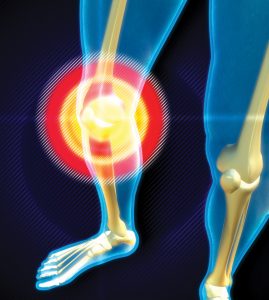 Osteoarthritis of the joints can affect people of all ages, but is one of the leading causes of disability in the aged population in the United States. A study published in the Caspian Journal of Internal Medicine found incidence of knee OA is rising by increasing average age of the general population. Age, weight, trauma, and repetitive movements are common risk factors for the condition.
Osteoarthritis of the joints can affect people of all ages, but is one of the leading causes of disability in the aged population in the United States. A study published in the Caspian Journal of Internal Medicine found incidence of knee OA is rising by increasing average age of the general population. Age, weight, trauma, and repetitive movements are common risk factors for the condition.
According to Dr. Scott Paris of Central Jersey Spine and Wellness, more than 27 million people in the country suffer from knee arthritis. An estimated 37 percent of Canadians aged 20 or older who had been diagnosed with arthritis reported osteoarthritis, with 29 percent occurring in the knees, states Statistics Canada. Knee arthritis occurs when there is a degeneration of articular cartilage that covers and protects the patella (knee cap) at the knee joint, offers the online resource Arthritis-Health. Since this cartilage has no nerve endings, some people can experience arthritis but feel no pain. However, pain may occur when doing specific activities that cause impact between bones, like jumping, walking up stairs or certain sports.
Over time, knee arthritis may become worse, and pain can be accompanied by stiffness and loss of mobility. This may be accompanied by knee locking or buckling.
Those who suffer from knee OA may seek treatment. In 2014, the Osteoarthritis Research Society International, a nonprofit organization dedicated to promoting osteoarthritis research and treatment, updated its recommendations for the treatment of osteoarthritis targeted to different patient characteristics. The main categories of treatment include non-drug treatments, medication, injections, and surgery.
• Non-drug treatments: Examples of non-drug treatments include exercise, stretching and range-of-movement strategies. Weight loss can alleviate excess strain placed on the hips and knees and reduce pain. Braces, sleeves and orthotics may help reduce pain and joint stiffness when directed properly through a specialist.
• Medications: Many medications are geared around reducing inflammation and pain and include over-the-counter pain relievers and NSAIDs, such as acetaminophen, ibuprofen and naproxen sodium. Topical NSAIDs may be tried, and these can reduce the risk of gastrointestinal side effects from oral medications. OARSI also found that the antidepressant duloxetine may help with chronic knee pain.
• Injections: The Arthritis Foundation says that some doctors can inject corticosteroid compounds directly into affected joints. Use of hyaluronic acid injections can supplement the natural substance that gives joint fluid its lubrication and viscosity. These injections may help relieve pain and improve mobility.
• Surgery: In cases when the aforementioned treatments are unsuccessful, doctors may suggest surgery. The Arthritis Foundation says joint lavage and arthroscopic debridement, which involve flushing the joint with a sterile saline solution and the surgical removal of tissue fragments from the joint, are controversial but may help some people achieve short-term relief. Partial knee replacement may be another option that offers a similar improvement in function, but fewer complications than a total knee replacement.
Osteoarthritis in the knee can be painful and restrictive. Working with a qualified doctor, individuals can develop a treatment plan that works for their specific conditions.
